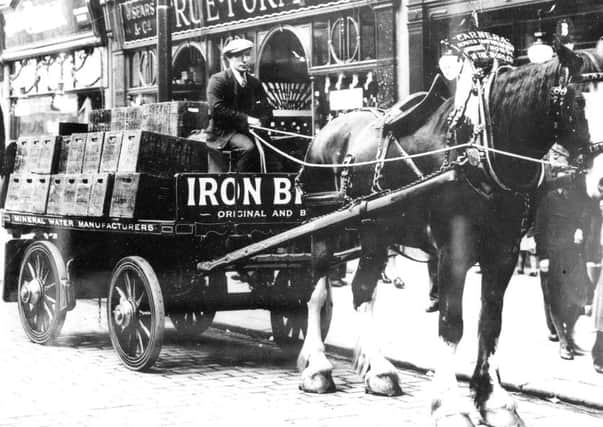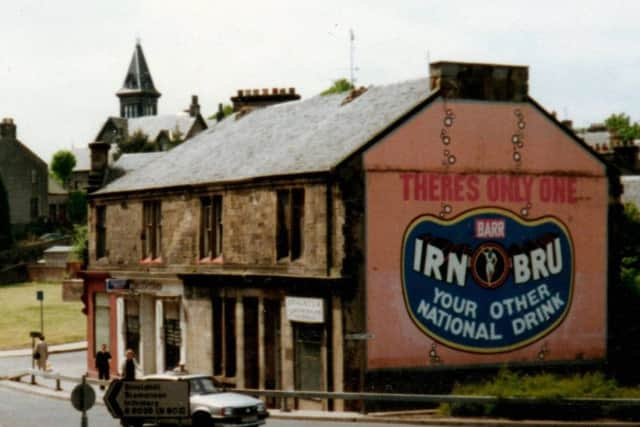Soft drinks boom saw the introduction of bestseller


But there was a time when the district had over two dozen firms in the same business all competing for a share of an expanding market.
Back in the early 19th century most towns had inadequate supplies of poor quality and often contaminated water which was a serious threat to health.
Advertisement
Hide AdAdvertisement
Hide AdThe alternative was to drink lots of ale and porter and for many a working man that was the road to a different kind of ruin.


In our district the problem was especially acute with hundreds of thirsty ironworkers slaving all day in hot and dusty foundries before making their way to the Red Lion, the Cat Inn or the Pie Office.
A growing temperance movement supported by the churches tried to steer folk away from temptation towards a more wholesome glass and the result was a huge upsurge in the production and consumption of these carbonated or aerated waters.
The first venture in Falkirk was the Garthall works of James Marshall which began operations around 1870 in Cochrane Street, opposite the former St Modan’s Church.
Advertisement
Hide AdAdvertisement
Hide AdBy 1900 it was in the hands of the Neilson family whose delivery carts served Falkirk district and well beyond.
Robert Barr had started work in 1830 as a cutter of corks for the local breweries and distilleries.
Over the years he moved from Buchanan Court to Callendar Riggs and eventually to Burnfoot at the bottom of Cockburn Street where, in 1873, his son, also Robert, decided to enter the profitable aerated waters trade.
New machinery for cutting corks threatened to destroy the family business and he judged that the market was big enough to support a new supplier of fizzy fruit drinks.
Advertisement
Hide AdAdvertisement
Hide AdTwo years later he obtained a connection to the municipal water supply and not long afterwards the cork cutting was abandoned.
Such was the firm’s success, they opened a plant at Parkhead in Glasgow in 1887 which by 1905 was employing 600 workers.
In 1901(or a couple of years earlier) the famous ‘‘Iron Brew’’ with its secret recipe appeared, though whether it was created first at Falkirk or Glasgow is a matter of speculation.
It was certainly made and distributed from both places and became a huge best seller with famous sportsmen of the day like Donald Dinnie, the weight lifter and strongman, queuing up to endorse its powers! The company quickly realised the power of advertising and their cartoon Ba-Bru was one of the longest running of all promotional adverts.
Advertisement
Hide AdAdvertisement
Hide AdAs well as Barr’s and Neilson’s, the district had Scotts and Dalziel & Clark in Grahamston, Reid Brothers and the Star Company in Bainsford, Porteous Murray of Larbert, Thomson and Sons of Stenhousemuir and quite a few in Bo’ness.
The product range was amazing and included such delicacies as Shamrock Cup, champagne ginger, Yum Yum (“an oriental drink sold in Japan”), Ciderette and Phoscal. But iron brew, renamed Irn-Bru in 1946 to protect the name, topped the lot and Barr’s steadily expanded taking over many of the other companies which gradually disappeared.
The firm’s delivery ‘‘lorries’’ and especially those pulled by ‘‘Carnera’’ were a popular sight and the works at Burnfoot continued in production until 1971 when the firm moved to Hopedale near Lock 16 in Camelon.
Modernisation and huge expansion led the company out of Falkirk in the 90s to Cumbernauld and, sadly, the 150 year link with the town was broken.